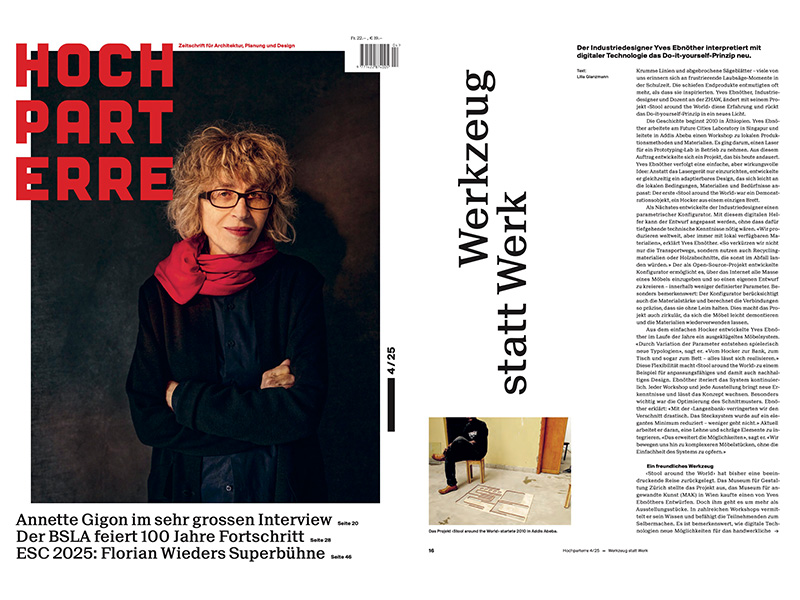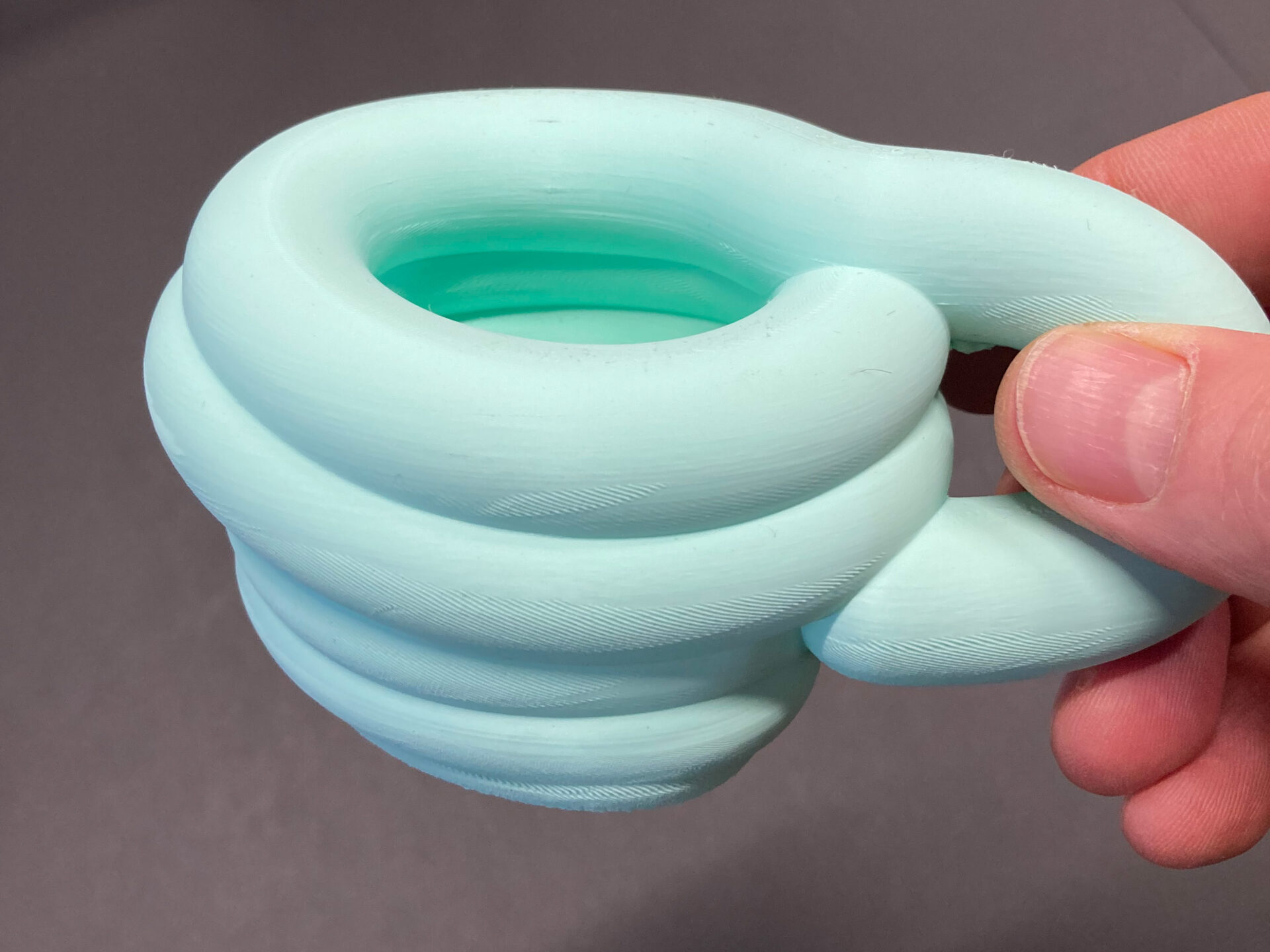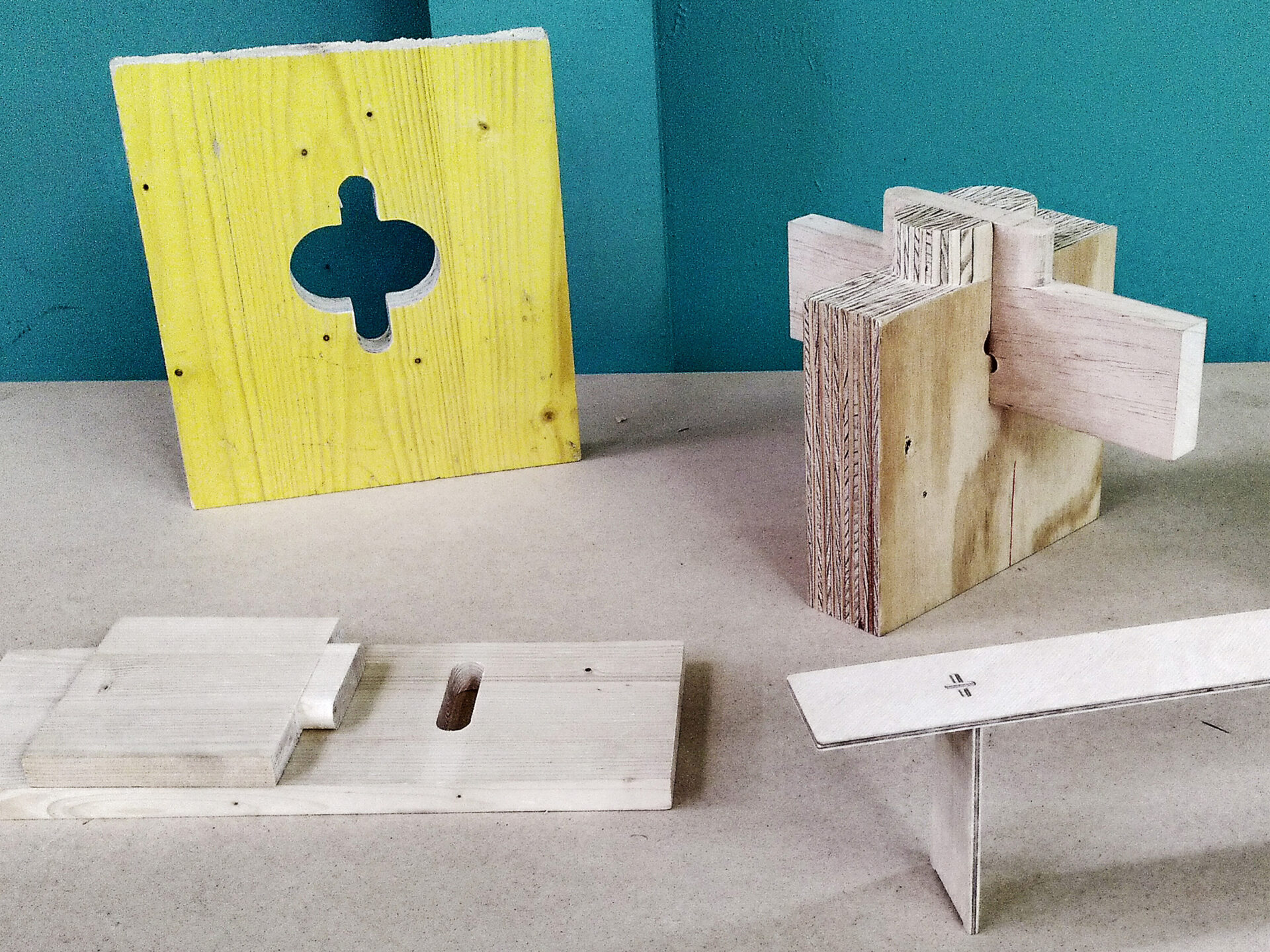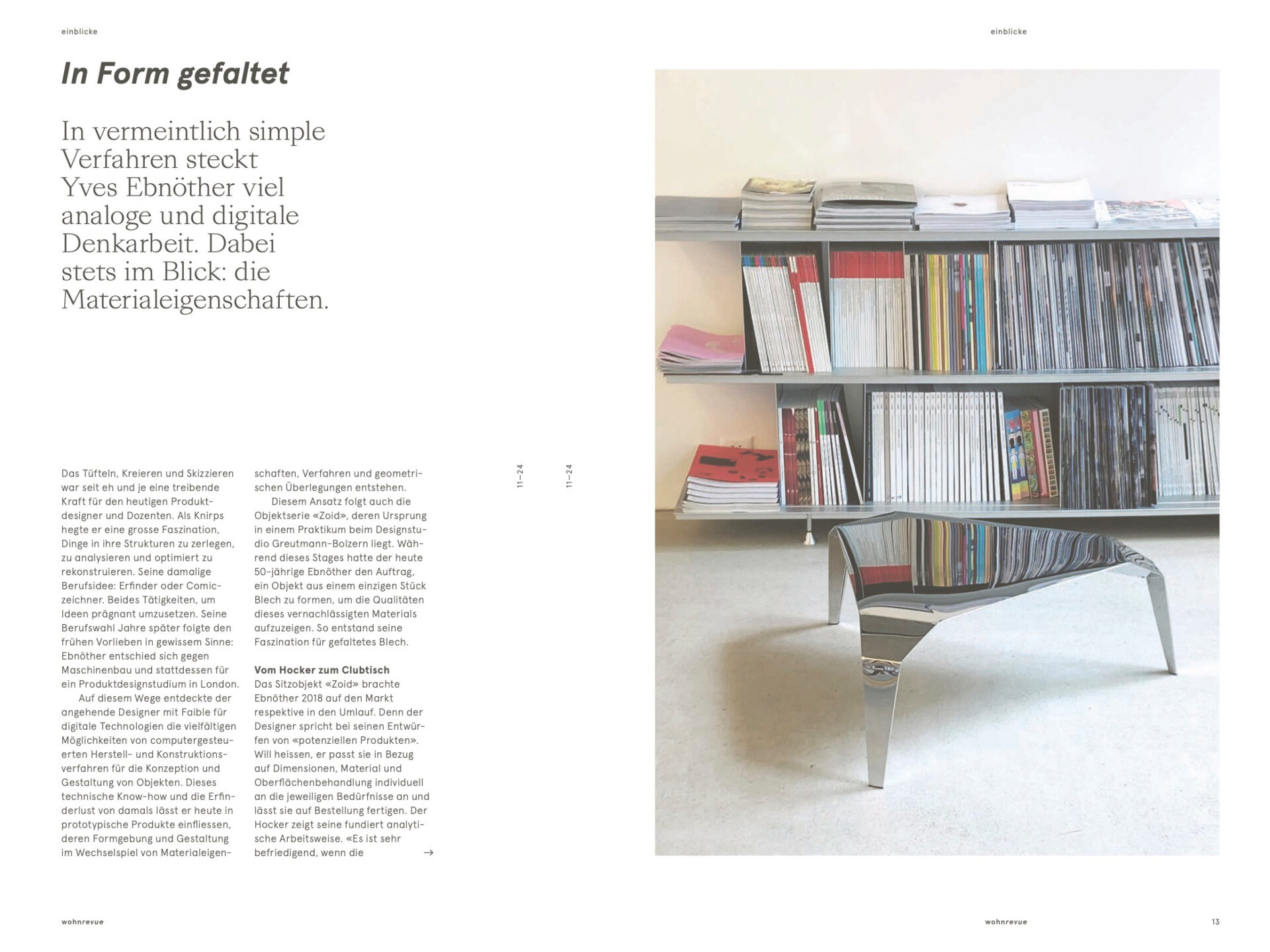
Short product/project description
The Zoid is an elegant and lightweight stool made from a single sheet of metal. Its unusual, facetted shape draws references both from science fiction and nature. Like a natural artefact, its form is closely related to its way of being made. Its saddle-shaped surface encourages a variety of seating positions, making it surprisingly comfortable to rest on. The hollow metal shell is very sturdy, durable and can be stacked (almost) infinitely. Made from one material only, the Zoid is ready to be recycled in the future.
Long product/project description
The initial intention of the project was to create an object which exemplifies the potential of sheet metal material. Being floppy and weak in its original state, the material’s properties can be transformed just by adding creases. This was the ignition for the idea of a seat which can be folded from a single sheet.
Naturally, the development of the folding pattern was a central challenge. It needed to ensure that the stool can be unfolded to a whole flat state, and also that the flat material can be folded into a closed (!) threedimensional body. Because the folding mechanics proved too complex for standard sheet metal softwares, a new and unique solution had to be developed. The result is a dynamic digital model which embodies all of the above criteria and is simultaneously a playful tool for designing.
Transferring the digitally calculated cutting patterns effortlessly into real material, computer-controlled machines enabled extensive material explorations, including a wood-leather sandwich, polypropylene sheet as a casting mould for concrete and aluminium-plastic compounds. Beautiful aluminium, anodised in many attractive colours sadly proved to be become brittle in real use.
Through the collaboration with the metal production company Kalag and the design-label Zarava / Urs Bürki, both located in eastern pre-alpine Switzerland, these difficulties were overcome and the current solution was developed. Tough, challenging to process stainless steel sheet turned out to be the ideal material for the project. It can still be folded from hand – a necessary prerequisite for the unconventional cutting pattern – is durable and conveys a beautiful sense of value and quality.
The Zoid’s form was continually refined during the process, leading to a slender appearance which is technical, highly functional and visually appealing at the same time.
While the current design is the end result of an intense process of development, it is also a point of departure for the creation of a family of products of various types. The digitally variable form and the unique process of production offer many interesting potentials, for example for performative on-the-spot production by hand, or by robot.
Why should you win a Dezeen Award?
The Zoid project is a prime example for a simple idea, that of elegantly creating a load-bearing volume through folding, which tuns out to be very hard to implement. At the core of this idea is the notion that the formative principle should to be identical with the actual manufacturing principle. In other words, the way in which the Zoid is designed is informed by how it is made, making it more akin to artful engineering than to conventional furniture design.
To realise this seemingly simple idea, more than a decade of combined research, exploration and development was needed. Initiated during an internship, the project was revisited and investigated academically at ETH Zurich, Switzerland, where the digital design tool was developed and a first version in anodised aluminium was produced in a limited series.
While aluminium was easy to machine, it was not durable under stress. The required cutting and engraving of a stainless steel sheet just 1mm thick, turned out to be a highly unusual and difficult procedure for industry, which is not offered let alone mastered in the necessary quality. It is only after a long search and costly trials with several companies that the current specialist manufacturer was found, which had gained relevant expertise on Bertrand Piccard’s Solar Impulse aeroplane project.
The Zoid stool is a highly sophisticated object which combines aspects of rigid origami geometry, innovative material processing and aesthetic finesse. Through the determined pursuit of a simple idea it was possible to create not only a design object of high practical use, but also to come up with a novel process for the design and manufacture of inherently sturdy and visually intriguing objects.
Whether the real value of the project lies in the beautiful proportions of the Zoid stool or in the potential of the design system behind – like many great designs, the Zoid stool makes the difficult look simple and accessible to a wide range of people: people looking for a place to rest, people with fascination for unconventional engineering, people looking for inspiration in a seemingly simple everyday object.





